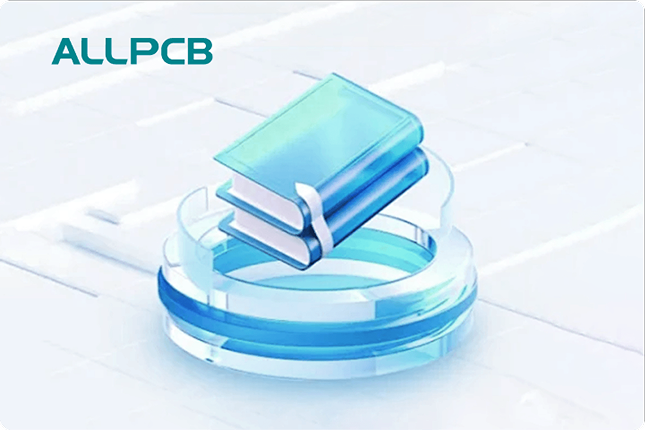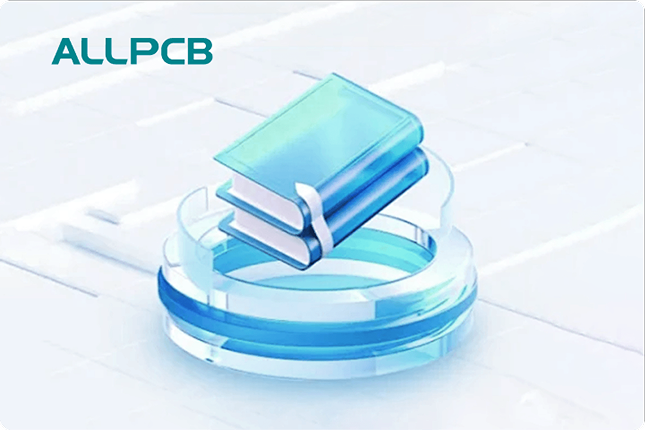When designing a 6-layer PCB, selecting the right substrate material is crucial for ensuring performance, reliability, and cost-effectiveness. Whether you're working on high-frequency applications, power electronics, or compact consumer devices, the substrate impacts signal integrity, thermal management, and overall board durability. In this comprehensive guide, we’ll explore 6-layer PCB substrate materials, compare popular options like FR-4 vs. Rogers, and dive into key factors such as dielectric constant, loss tangent, and material cost. By the end, you’ll have a clear understanding of how to choose the best material for your specific application.
Why Substrate Material Matters for 6-Layer PCBs
A 6-layer PCB consists of multiple layers of conductive copper and insulating substrate materials stacked together. The substrate, often called the dielectric material, serves as the foundation that holds the layers and provides insulation between them. It directly affects the board’s electrical performance, thermal behavior, and mechanical strength. For a 6-layer PCB, where complexity increases with additional layers, the substrate must balance performance with manufacturability.
Choosing the wrong material can lead to issues like signal loss, overheating, or even board failure. For instance, high-frequency designs may suffer from poor signal integrity if the substrate has a high loss tangent. On the other hand, opting for a premium material when a standard one suffices can unnecessarily drive up costs. Let’s break down the key considerations for 6-layer PCB substrate materials.

Key Factors in Choosing 6-Layer PCB Substrate Materials
Before diving into specific materials, it’s important to understand the properties that define a substrate’s suitability for your project. Here are the primary factors to consider when selecting 6-layer PCB substrate materials:
- Dielectric Constant (Dk): This value indicates how much a material can store electrical energy. A lower Dk is better for high-frequency applications as it reduces signal delay and crosstalk. Typical values range from 2.2 to 4.5 for common PCB materials.
- Loss Tangent (Df): Also known as dissipation factor, this measures the energy loss in the substrate as a signal passes through. A lower loss tangent is critical for high-frequency designs to minimize signal attenuation. Values often range from 0.001 to 0.02.
- Thermal Conductivity: This determines how well the material dissipates heat. For power-intensive applications, a higher thermal conductivity helps prevent overheating and ensures reliable operation over time. Values are typically between 0.3 and 1.5 W/m·K for standard materials. Effective PCB thermal management relies on choosing base materials with adequate thermal conductivity, especially for high-power or high-density designs like LED drivers, power converters, and RF boards.
- Cost: Material cost can vary widely, impacting the overall budget of your project. Balancing performance with affordability is key, especially for large-scale production.
- Mechanical Strength: The substrate must withstand physical stress during manufacturing and operation, especially for multilayer designs like a 6-layer PCB.
With these factors in mind, let’s compare two of the most common substrate materials for 6-layer PCBs: FR-4 and Rogers.
Suggested Reading:The Ultimate Guide to 6-Layer PCB Thermal Management: Keeping Your Boards Cool
6-Layer PCB FR-4 vs. Rogers: A Detailed Comparison
When it comes to 6-layer PCB substrate materials, FR-4 and Rogers are often the top contenders. Each has unique strengths and weaknesses, making them suitable for different applications. Below, we compare them across key parameters like dielectric constant, loss tangent, and material cost.
FR-4: The Standard Choice for 6-Layer PCBs
FR-4 is the most widely used substrate material in PCB manufacturing. Made from woven fiberglass and epoxy resin, it’s known for its affordability and versatility. Here’s how FR-4 performs in a 6-layer PCB design:
- Dielectric Constant (Dk): Around 4.3 to 4.5 at 1 MHz. This value is acceptable for low- to mid-frequency applications but may cause signal delays in high-speed designs.
- Loss Tangent (Df): Typically 0.02 at 1 MHz. This relatively high value means FR-4 isn’t ideal for high-frequency signals due to energy loss.
- Thermal Conductivity: Approximately 0.3 W/m·K. FR-4 has limited heat dissipation, so it may not suit high-power applications without additional thermal management.
- Cost: Very cost-effective, often priced at $0.50 to $1.00 per square inch for standard thicknesses, making it a go-to for budget-conscious projects.
- Applications: Ideal for consumer electronics, industrial controls, and other applications where high-frequency performance isn’t critical.
FR-4 is a reliable choice for many 6-layer PCB designs, especially when cost is a primary concern. However, its limitations in high-frequency and high-power scenarios often push designers toward alternatives like Rogers materials.
Rogers: Premium Performance for High-Frequency Designs
Rogers materials are high-performance substrates designed for demanding applications. They are often used in RF, microwave, and high-speed digital circuits. Here’s a breakdown of their properties for 6-layer PCBs:
- Dielectric Constant (Dk): Ranges from 2.2 to 3.5, depending on the specific Rogers series (e.g., RO4350B at 3.48). Lower Dk values support faster signal transmission, making them ideal for high-frequency designs.
- Loss Tangent (Df): As low as 0.003 to 0.004 at 10 GHz for certain Rogers materials. This low loss tangent ensures minimal signal attenuation, critical for RF and microwave applications.
- Thermal Conductivity: Around 0.6 to 0.8 W/m·K, better than FR-4, offering improved heat dissipation for high-power circuits.
- Cost: Significantly higher than FR-4, often ranging from $2.00 to $5.00 per square inch or more, depending on the specific material and thickness.
- Applications: Perfect for telecommunications, aerospace, automotive radar, and other high-frequency or high-speed applications.
Rogers materials outperform FR-4 in almost every electrical and thermal aspect, but their higher cost means they’re typically reserved for projects where performance justifies the expense.
6-Layer PCB Dielectric Constant and Loss Tangent Explained
For 6-layer PCB designs, especially those involving high-speed or high-frequency signals, understanding dielectric constant (Dk) and loss tangent (Df) is essential. Let’s dive deeper into these properties and their impact on performance.
Dielectric Constant (Dk) in 6-Layer PCBs
The dielectric constant measures a material’s ability to store electrical energy in an electric field. In a 6-layer PCB, the Dk affects the speed at which signals travel through the board and the impedance of transmission lines. A lower Dk results in faster signal propagation, which is critical for high-speed digital and RF applications.
For example, with FR-4’s Dk of around 4.4, signal speed is approximately 1.4 x 10^8 m/s. In contrast, a Rogers material with a Dk of 3.0 achieves a signal speed closer to 1.7 x 10^8 m/s. This difference might seem small, but in high-frequency designs operating at GHz levels, it can significantly reduce signal delay and crosstalk between layers.
Loss Tangent (Df) in 6-Layer PCBs
The loss tangent, or dissipation factor, indicates how much energy is lost as heat when a signal passes through the substrate. A high Df means more signal loss, which can degrade performance in high-frequency applications. For a 6-layer PCB with closely spaced layers, minimizing loss tangent is often necessary to maintain signal integrity across all layers.
For instance, FR-4’s Df of 0.02 can result in noticeable signal attenuation at frequencies above 1 GHz. On the other hand, a Rogers material with a Df of 0.003 maintains signal strength even at 10 GHz, making it a better choice for RF circuits in a 6-layer stack-up.
6-Layer PCB Material Cost Comparison
Cost is a major factor when selecting a substrate for a 6-layer PCB. While performance is important, staying within budget is often a priority, especially for large production runs. Let’s compare the material costs of FR-4 and Rogers for a typical 6-layer PCB design.
- FR-4: As the industry standard, PCB material FR4 is the most affordable option. For a 6-layer PCB with a standard thickness of 1.6mm, the material cost typically ranges from $0.50 to $1.00 per square inch. This makes it ideal for cost-sensitive projects where high-frequency performance isn’t required.
- Rogers: High-performance Rogers materials come at a premium. Depending on the specific series and thickness, costs can range from $2.00 to $5.00 per square inch or higher. For a 6-layer PCB, this can significantly increase the overall project budget, especially for larger boards.
Beyond raw material costs, it’s worth considering manufacturing complexity. Rogers materials often require specialized processing, which can add to fabrication expenses. If your application doesn’t demand high-frequency performance, sticking with FR-4 for your 6-layer PCB can save substantial costs without sacrificing reliability.
How to Choose the Right Substrate for Your 6-Layer PCB Application
Selecting the right substrate material for a 6-layer PCB depends on your project’s specific requirements. Here are some guidelines to help you make an informed decision:
- For General-Purpose Electronics: If your 6-layer PCB is for consumer products, industrial controls, or low-frequency applications, FR-4 is likely the best choice. Its balance of cost and performance meets the needs of most standard designs.
- For High-Frequency or High-Speed Designs: If your project involves RF, microwave, or high-speed digital signals (e.g., above 1 GHz), a Rogers material is worth the investment. Its low dielectric constant and loss tangent ensure superior signal integrity across all layers.
- For High-Power Applications: If heat dissipation is a concern, consider materials with better thermal conductivity. While Rogers offers some improvement over FR-4, you might also explore hybrid stack-ups combining different materials for optimal performance.
- For Budget-Conscious Projects: When cost is the primary constraint, stick with FR-4. However, ensure that its electrical and thermal properties meet your design’s minimum requirements to avoid performance issues.
Additionally, consider consulting with your PCB manufacturer early in the design process. They can provide insights into material availability, stack-up recommendations, and cost-saving strategies tailored to your 6-layer PCB design.
Other Substrate Options for 6-Layer PCBs
While FR-4 and Rogers dominate the market, other substrate materials may be suitable for niche 6-layer PCB applications. Here are a few alternatives:
- Polyimide: Known for its flexibility and high-temperature resistance, polyimide is often used in flexible or rigid-flex 6-layer PCBs. It’s more expensive than FR-4 but offers unique mechanical properties.
- PTFE-Based Materials: These materials have very low dielectric constants (around 2.1) and loss tangents, making them excellent for ultra-high-frequency applications. However, they are costly and challenging to process.
- Ceramic-Filled Laminates: These provide excellent thermal conductivity and are often used in high-power RF applications. Their cost is typically higher than even Rogers materials.
These options are less common but may be worth exploring for specialized 6-layer PCB designs with unique requirements.
Conclusion: Making the Right Choice for Your 6-Layer PCB
Choosing the right substrate material for a 6-layer PCB is a critical step in ensuring your design performs as expected. Whether you opt for the cost-effective and versatile FR-4 or the high-performance Rogers materials, understanding key properties like dielectric constant, loss tangent, and thermal conductivity is essential. By aligning your material choice with your application’s specific needs—be it high-frequency performance, thermal management, or budget constraints—you can achieve a successful design outcome.
At ALLPCB, we’re committed to helping you navigate the complexities of 6-layer PCB design. From material selection to manufacturing, our expertise ensures your project meets both performance and cost goals. Explore our resources and services to bring your next PCB design to life with confidence.
 ALLPCB
ALLPCB


